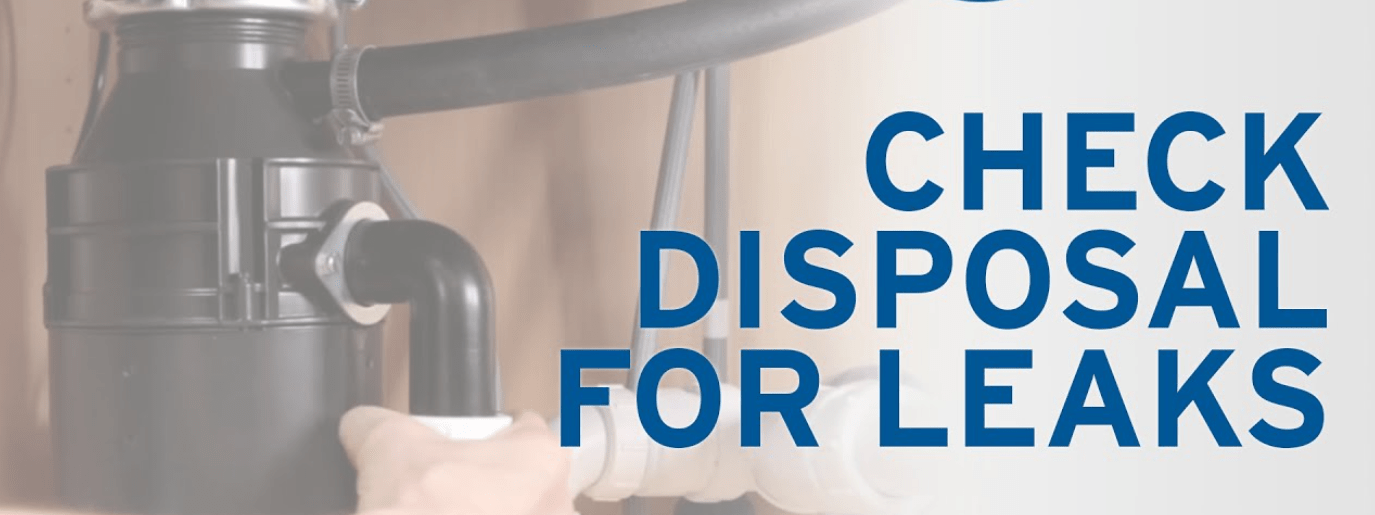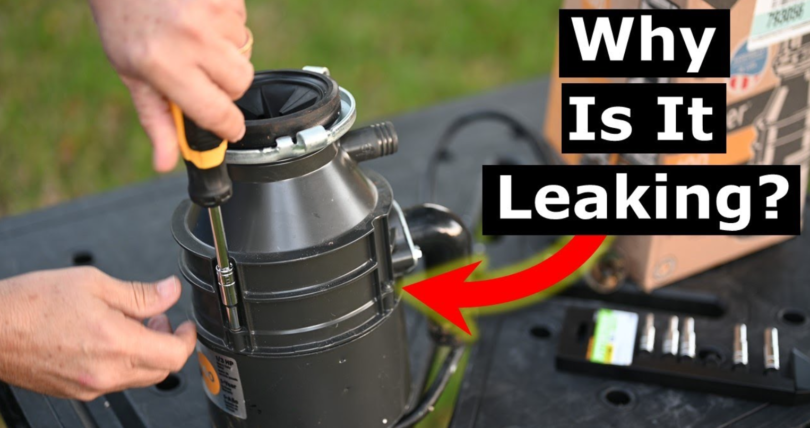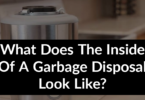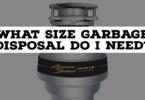Suspicious of leakage in one of your most challenging kitchen work equipment? Break the problem and repair garbage disposal leaking from the bottom with these tips and techniques.
Disposal of garbage often leaks without realizing it until you face the sopping cabinet, a rotten inundation called foul-smelling, or drip droplets heard from the unit. The repair is also frustrated because leakage can come from several components in the system. Luckily, with a little sleuthing, you can zero on the leak and – depending on the right location.
Stop the Icky flowing and repairing the components that cause it. It must replace if garbage disposal, the worst scenario is installing a new DO-ITSELF task that makes sense for those who have the necessary plumbing skills. Read on to keep cash; you will submit a Pro.
Contents
Be Prepared To Find A Leak:
- Pull it out and turn off the breaker box’s power to prevent electric shock.
- Enter the waterproof sink stopper into the drain of your sink and clean the dry unit with a clean cloth.
- In a practical container, mix a few drops of food coloring into a few cups of water, and pour the water dyed into the sink stopper to help you find a leak.
Investigate The Leak Of Garbage Disposal From Bottom:
- Using a flashlight, check the unit to escape from colored water, which is likely to come from one of three places: the top, where disposal meets the sink drain
- Side, where the dishwasher hose or the main exhaust pipe is connected to the disposal or the bottom of the unit
Check each of these locations while sliding brightly colored cloth above the unit; Dyed water will quickly show the lap and reveal the leak’s location. If the leak is not immediately apparent, remove the sink stopper, pour several cups of water dipped down to the sink, and then recheck the leak.
Read: Things Not to Put in Garbage Disposal
Leaks near the top of the unit are more likely to show themselves when the sink is plugged in, while the leaking side and below are more visible when the sink is revoked. If it leaks the top of the waste disposal, the seal returns and tightens the flanges.
The flanking metal sinks sitting directly inside the sink drain are usually sealed at the top with a plug (sealant like clay) and then secured from under the sink with a bolt. If the exposure of a plunging plug or bolt loosens, flanges can no longer form a waterproof seal between the sink drain and disposal – which can cause leakage at the top of the unit.
Remove The Leak Flanges:
To close the leaked flanges, you must first let go of the garbage disposal. Start by loosening the screw that secures the main exhaust pipe to be discarded, then loosen the screw in the metal clamp that holds a dishwasher to be discarded and removes the sewer pipe and dishwashing hose from the disposal.

Loosen the screw in the installation ring that connects the disposal to the metal installation assembly under the sink, then pull it down and set it carefully on a clean and dry surface. Loosen the bolt in assembling the installation with the right key, then pull it down the installation assembly and set it near the disposal.
Lift the sink flanges from the top of the sink. Utilize a plastic putty knife to scrape the plumber’s old plumbers at the top of the flanges, then clean the putty residue with a wet cloth.
Read: Are all Garbage Disposals Same Size?
Now grab Palmful of Plumber’s Putty (available at a hardware store, home center, and online) and roll it into a quarter-inch “rope” for a quarter-inch with the same length as the flanges.
Wrap the putty rope around the top of the flange like a collar, then add the flange into the opening drain the sink until it’s right. Replace the installation assembly and installation ring (be careful to tighten the installation bolt-on assembly installation safely), reinstall the garbage disposal, the pipe channel, and the dishwashing hose in the reverse order you release it.
If you see a leaky disposal side, tighten the drain connection and change the gasket worn. Two drain lines extend in the sides of the garbage disposal: a narrow dishwasher hose that connects the disposal pipe dishwasher to the dishwasher you want and the main exhaust pipe that connects your disposal to the outlet on the wall.
If you spy on the leak on the disposal site where the dishwasher hose meets the disposal dishwasher inlet, the problem can be a metal clamp that connects it. In this case, tighten the screw on a metal clamp with a screwdriver.
If the leak is beside where the disposal fills the garbage disposal pipe, loosen the screw that secures the disposal pipe for disposal and check the rubber gasket in the pipe – it might be outdated. Change the gasket and tighten the disposal pipe screw again. If the bottom of the unit leaks, change the disposal.
Those leaks from the bottom of the garbage disposal (often from the reset button) show that at least one seal on the interior shell unit that protects the motor has deteriorated or that the shell itself has cracked.
This vulnerability can cause water from the sink to seep into the shell of the disposal and leak from the unit’s base. In old garbage disposal, one internal seal compromised is often accompanied by someone else, so your best bet is installing a new one.
Cost Tor Leakage Removal:
Employing a pro to replace the unit will run with an average of $ 400, including labor and spare parts, or you can install the garbage disposal itself and save anywhere from $90 to $200 in labor costs. You must be able to get eight to 15 years of use of new waste disposal.
Check Your Work By Draining Water Through The Sewer:
Whether you repair or replace the disposal of leaking garbage, test for each speckled problem. Wipe the dry unit with a clean cloth, then unplug the drain sink (if plugged) and pour several cups of water dyed into the sealed channel again. Use a flashlight to check all units. If you do not observe leaks, turn on the power to dispose of your breaker box and install the disposal at the wall outlet.
Prevent Leakage In The Future:
The use of proper garbage disposal can prevent future leakage. So remember to grind soft food; Hard items such as bones, apple cores, or raw potatoes can drive away or damage the internal seal. Run cold water through the sink sewer before and after food disposal to maintain solid fat from congealing into gunk (which can deteriorate the sink flanges and cause leaks).
Read: How to Clean a Garbage Disposal?
Finally, check your disposal for leaks at least twice a year using a dyed water test to capture and repair a small leak before they lead to a broken sink cabinet or kitchen floor.





Leave a Comment